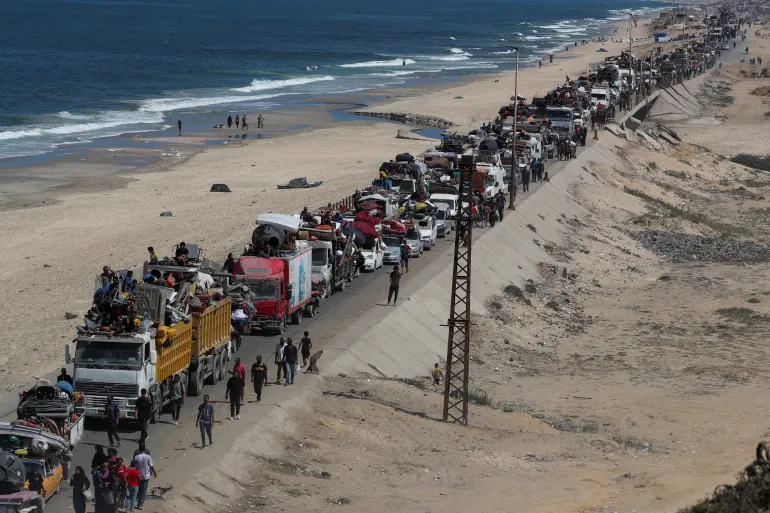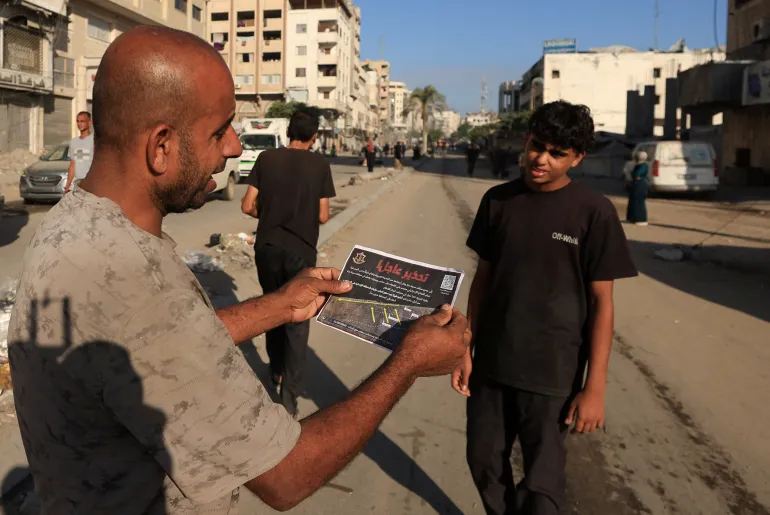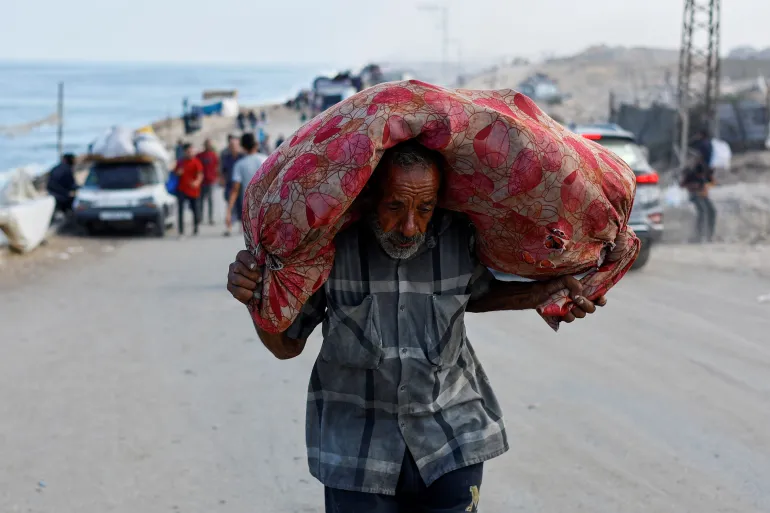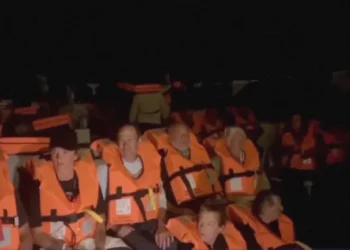Israeli troops pressed ahead with a ground offensive into Gaza City on Wednesday, making further efforts to force more people to flee their homes and travel to overcrowded and unsafe areas in the south of the devastated territory.
The Israel Defense Forces (IDF) said on Wednesday, September 17, 2025, they had carried out 150 air and artillery strikes ahead of the ground operation that began early on Tuesday morning.
The coast road leading south from Gaza City has been packed with families trying to flee the offensive. On Wednesday, the IDF announced the opening of a second route, through the middle of the Gaza Strip, for two days to try to encourage the exodus.

However, many residents of Gaza City and the rest of the north are very unlikely to have received any of the text messages or social media posts put out by the IDF because strikes in the region have damaged the telephone network.
Of the million Palestinians living in and around Gaza City, the Israeli military estimates 350,000 people have left and moved south over the past month. The UN estimate is 238,000, including about 50,000 in the last 48 hours.
Many residents said they had been unable or reluctant to leave for multiple other reasons.
Some are physically unable to move, weakened by many months of near starvation, and some cannot afford the costs of transport or the price of a rudimentary plastic sheeting tent at their destination.
Very many consider the south to be as dangerous as Gaza City. Israel has frequently bombed the “humanitarian zone” it established at al-Mawasi. The sprawling camp there was hit by an Israeli strike overnight, killing two parents and their child.
Many Israeli security officials, including the IDF chief of staff, Lt Gen Eyal Zamir, have privately questioned the wisdom of the offensive, in terms of its human cost and because they think there is little chance it will achieve its stated goal of the total destruction of Hamas.
There have been no security checks of the mass of people fleeing south, so most observers believe it probable that Hamas militants will regroup elsewhere. IDF officials have estimated there are between 2,000 and 3,000 Hamas and Islamic Jihad fighters ready for battle in the city centre, but IDF intelligence estimates suggest that is only a small fraction of their surviving forces.
Many Israeli observers and commentators believe the real motives for the offensive are political: to keep Israel in a state of war so as to fend off early elections in which Benjamin Netanyahu’s hard-right coalition could be unseated, and to make Gaza City uninhabitable so as to put pressure on Palestinians to leave and for other countries to receive them.
Cogat, the Israeli defence ministry body that administers access to Gaza, on Wednesday issued advice to Palestinians in the territory who wanted to leave.
Israel ‘Paying Lip Service To International Law’ With Gaza City Leaflet Drops

Sultan Barakat, Professor of Public Policy at Hamad Bin Khalifa University in Qatar, opined that Israel has been trying to make it more difficult to hold it legally accountable for its abuses in Gaza.
“They try to make sure that they tick [off] the principles – just a very light tick – to make it much more difficult to pin them down as having breached the law itself,” he said.
Sultan Barakat
He cited Israel’s aerial drops of leaflets with evacuation orders for residents of Gaza City as an example. “The throwing of leaflets to warn the population is actually in line with international requirements,” he said.
“But what the international law actually says is that you have to give them the warning, but it has to be feasible – feasible in terms of time … and most importantly, alternative shelter elsewhere.”
Sultan Barakat
He stated, “They don’t do the whole package,” adding, “What they do is they throw the leaflets and they say, ‘Well, we warned them.’”
READ ALSO: TotalEnergies Secures four Offshore Exploration Blocks in Liberia





















